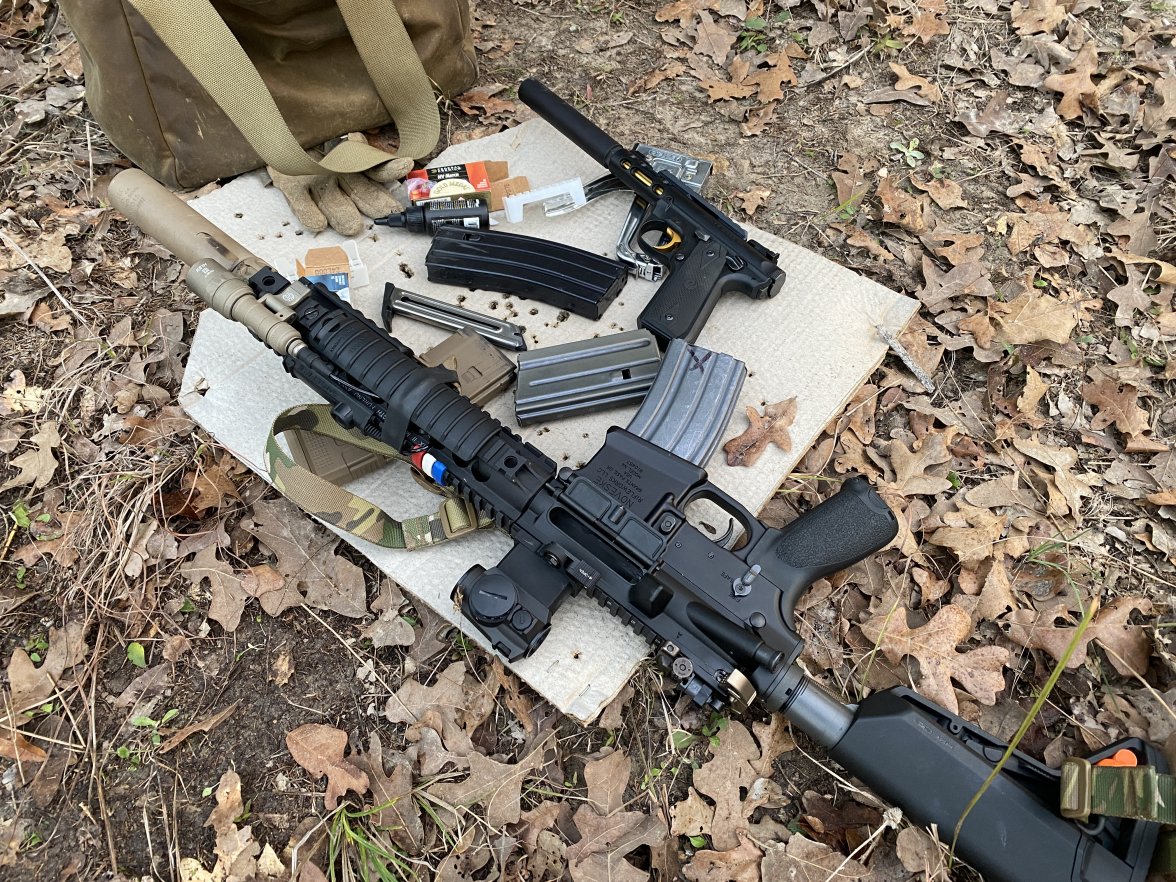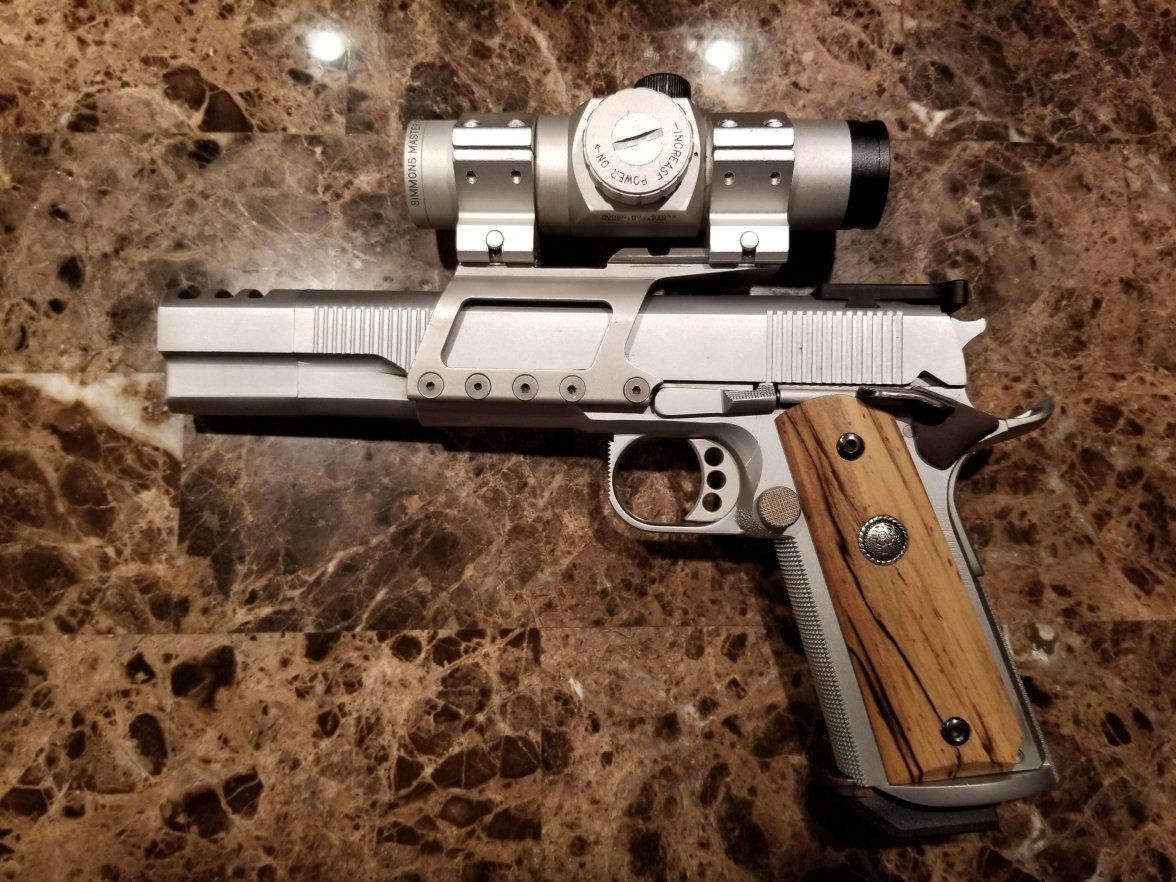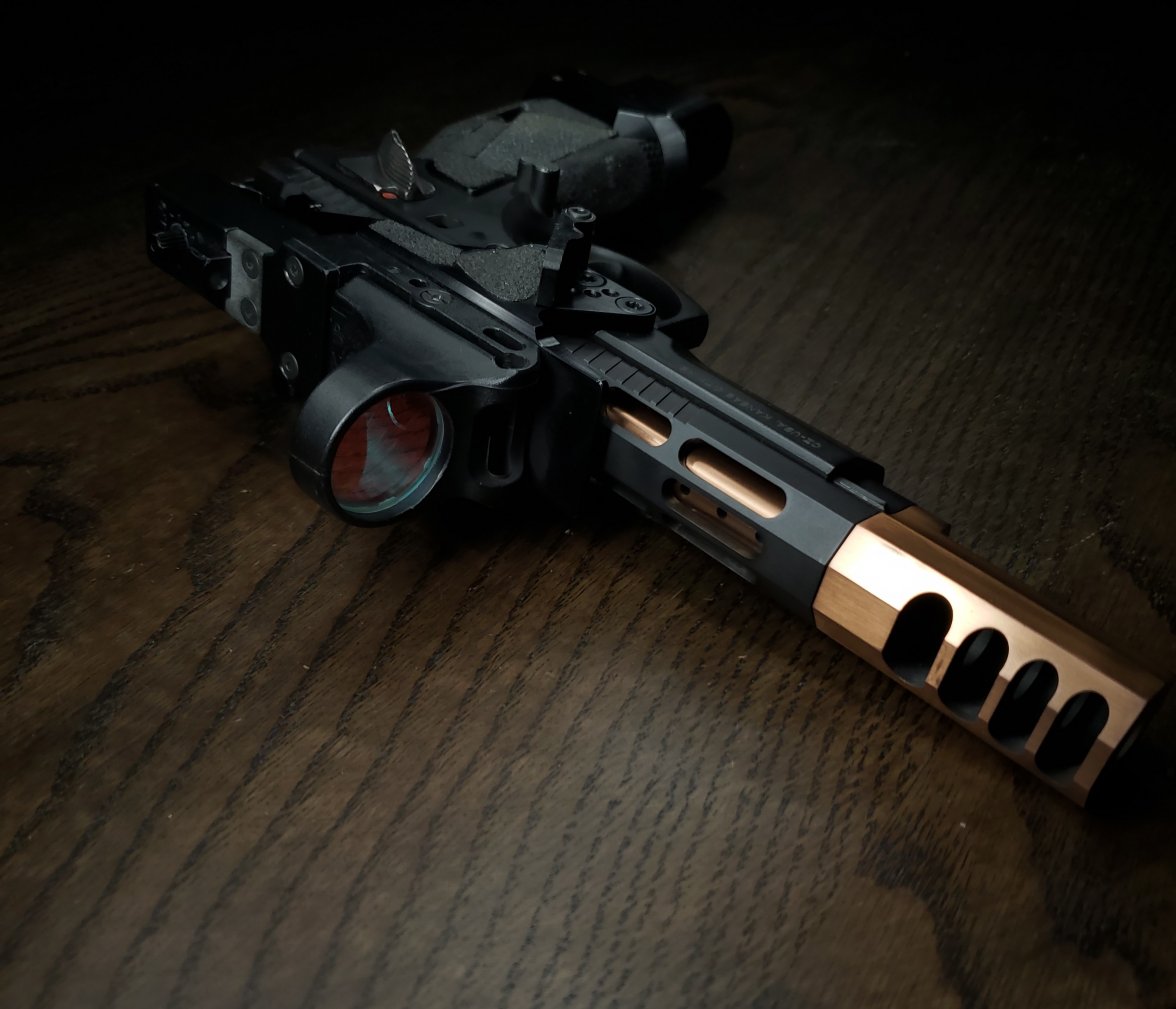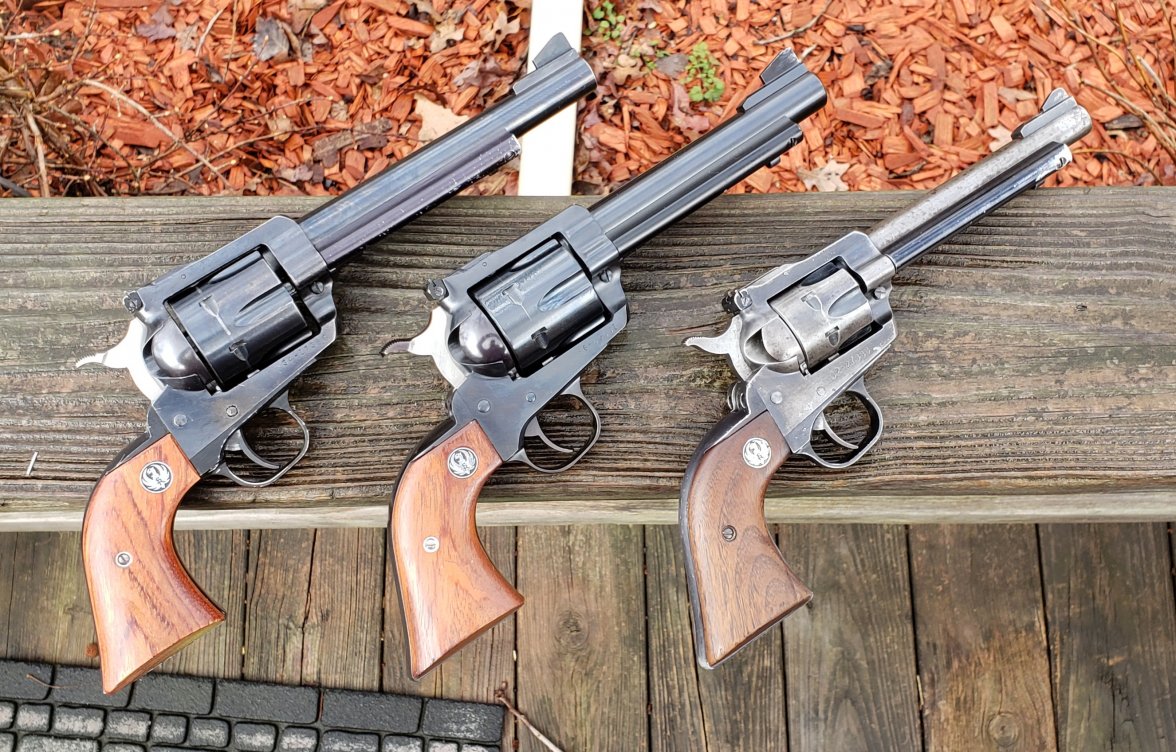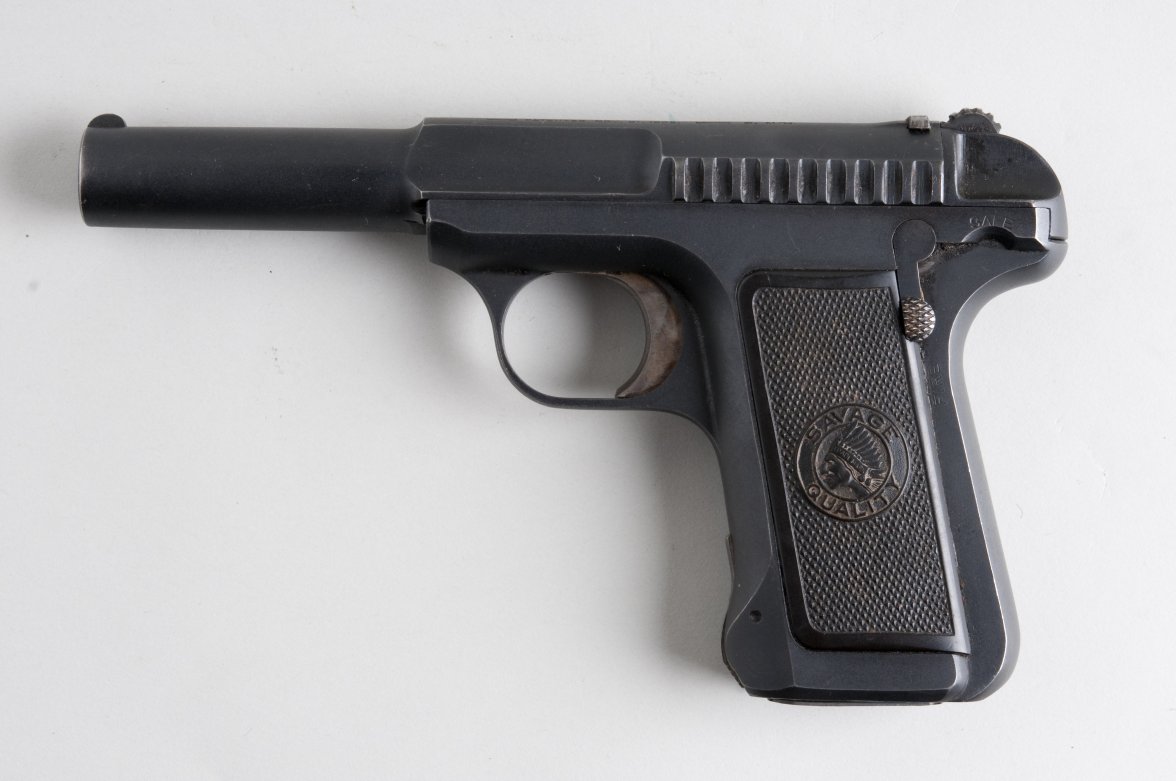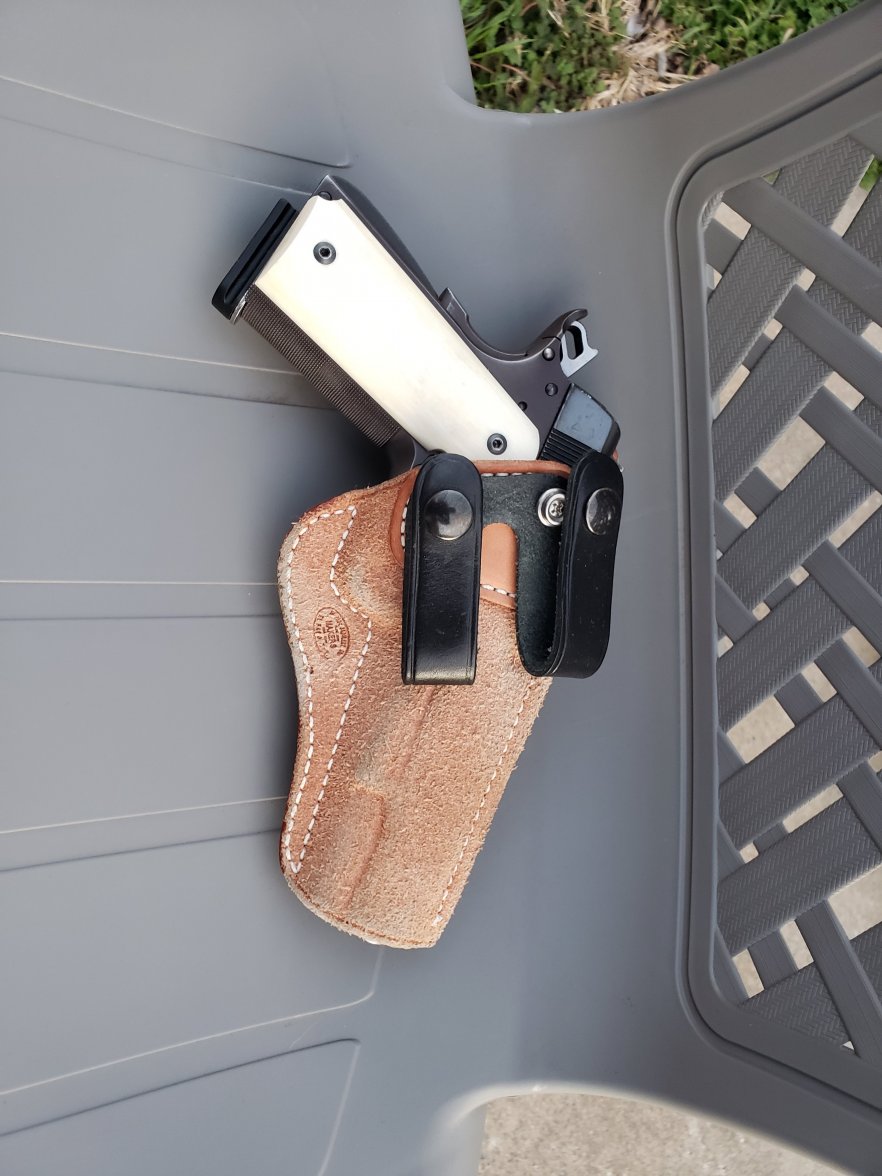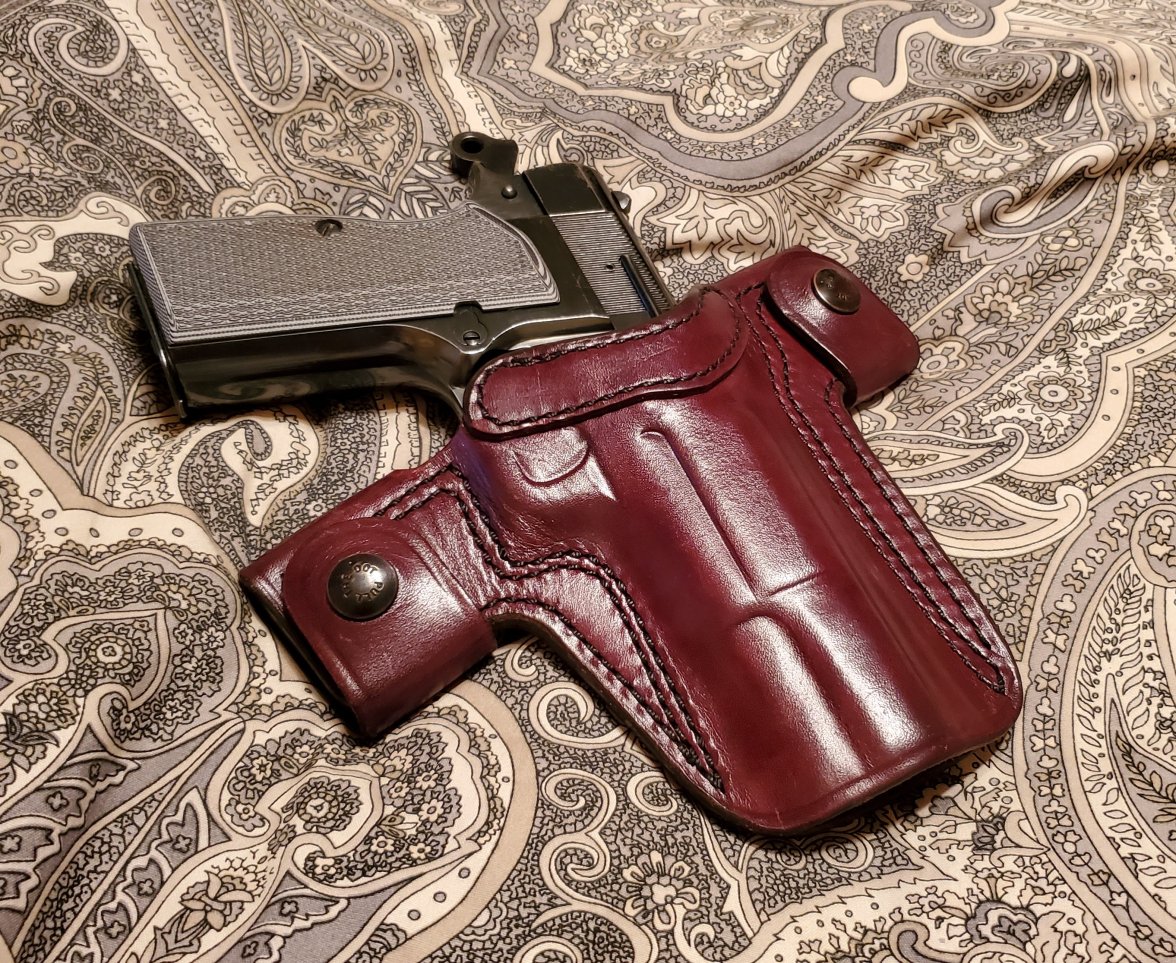Professor
·Took my 10yo out to shoot the Ruger MkIV. His first time shooting it suppressed. SBR is still a bit too heavy for him though.
Speaking of Ruger Pistols, I've owned two .22s and test fired one .357 that could not hit the ground if you dropped them.
The first was a nice handy Bearcat I got cheap because it had been returned to the LGS by a dissatisfied customer. I soon found out why. The little pistol seemed to be in perfect time but it sprayed lead and sparks in my face every shot and I could not even see where the bullets were going.
Many years later I found out why. Apparently some of the early production barrels had no forcing cone cut in the breech. The lands were scrapping off streamers of lead from the bullets which were then blown out the cylinder gap. I traded the pistol back to the LGS for a Remington Rand .45.
The Second was a Ruger autoloader. There was nothing visible to explain it but this particular gun was very inaccurate. I sold it for several times what I had in it to someone I didn't like.
The .357 had been returned to another LGS. A prospective buyer asked me to check it out since it was being offered dirt cheap. Using .38 special rounds you could see the bullets spinning sideways and falling to the ground about ten yards or less from the muzzle. I looked down the bore and found it choked with leading. On cleaning the bore I found that a chip must have been caught in the reamer before rifling. There were deep more or less concentric scars all down the bore, deeper than the rifling in spots. You'd be lucky to get a bristle brush through it intact much less a lead bullet.
Ruger designs and materials are great, among the best in the industry, as is most of the workmanship, but for years they had next to nothing as far as quality control went.
I'm sure they rectified that years ago or they'd have never stayed in business.
